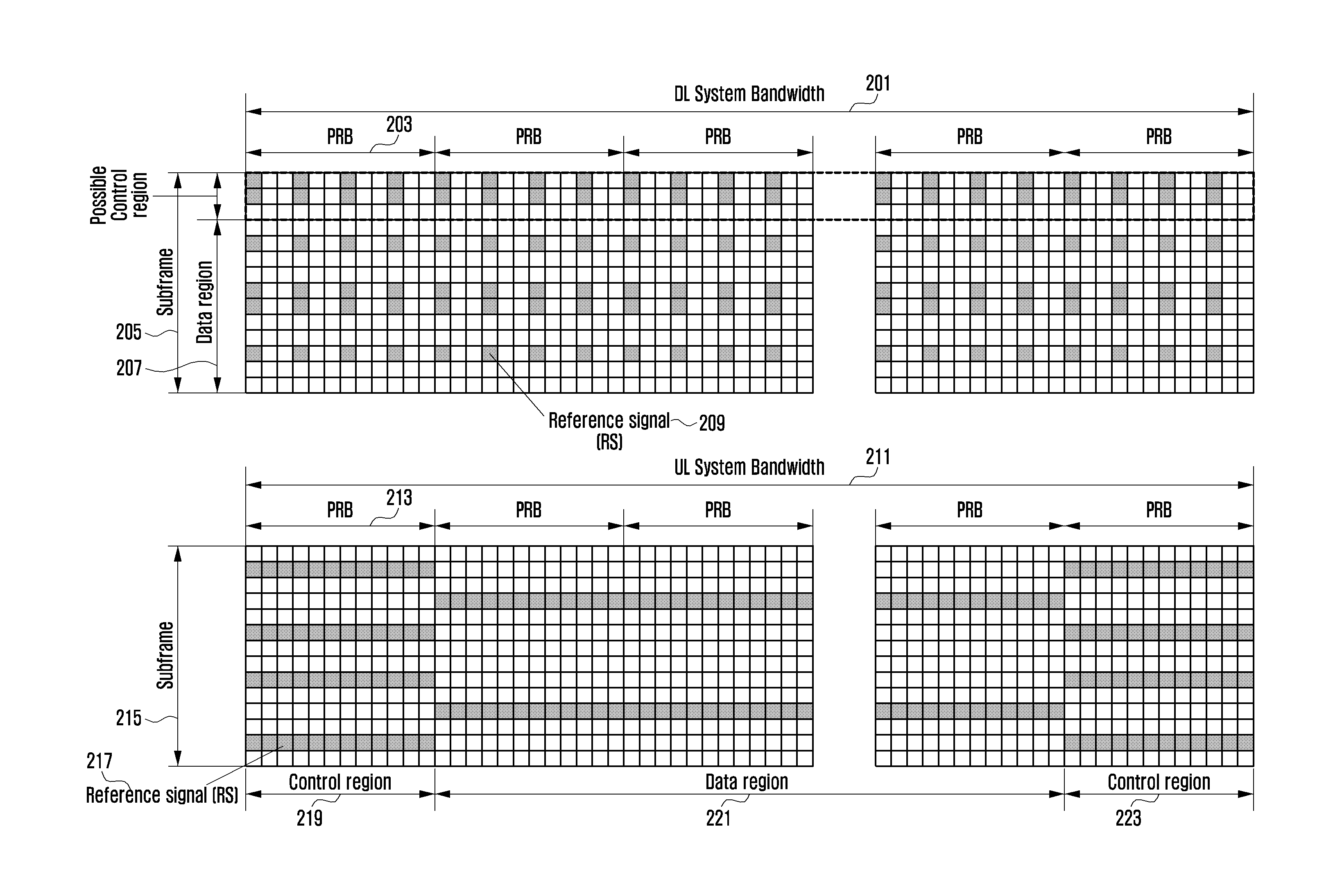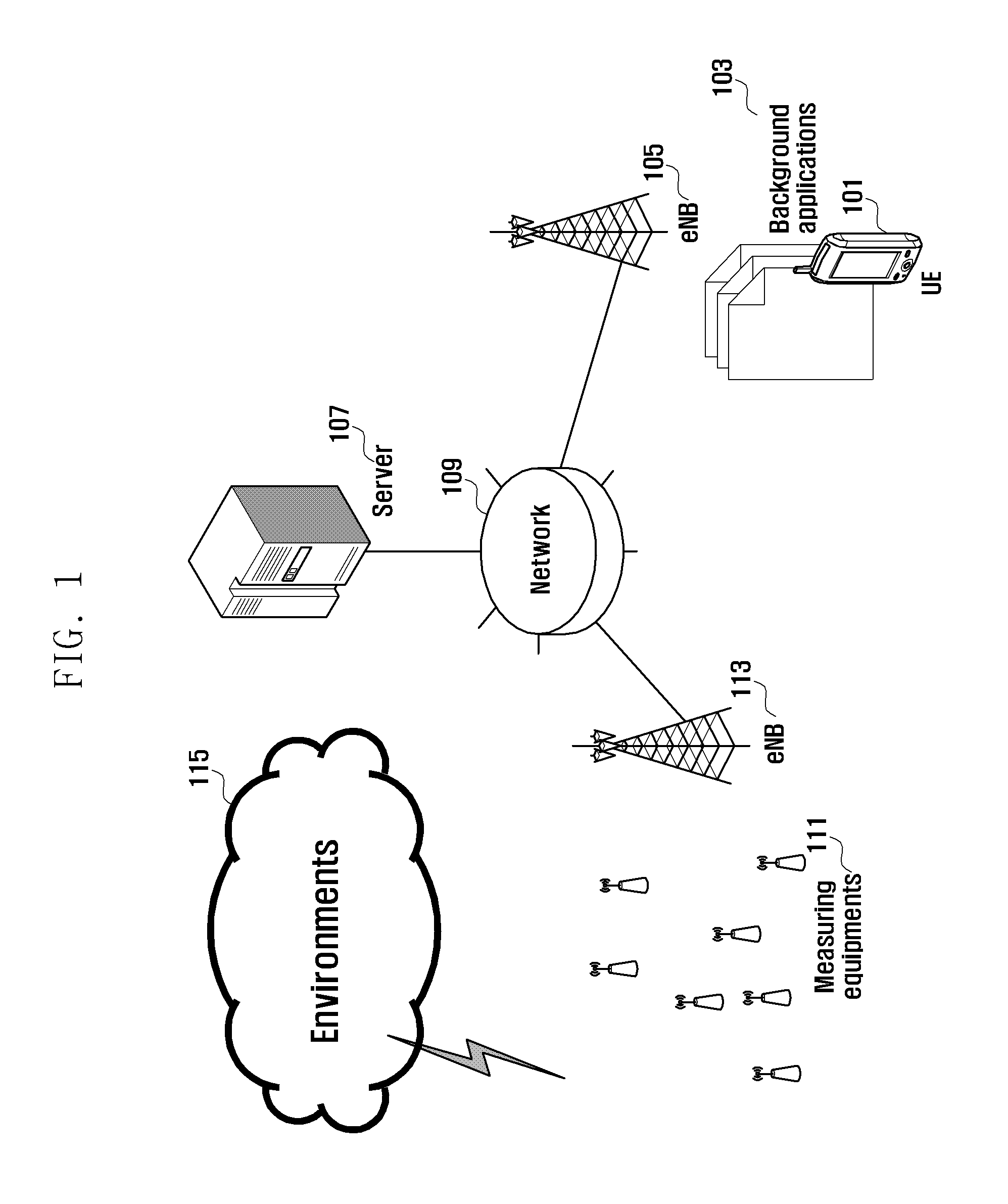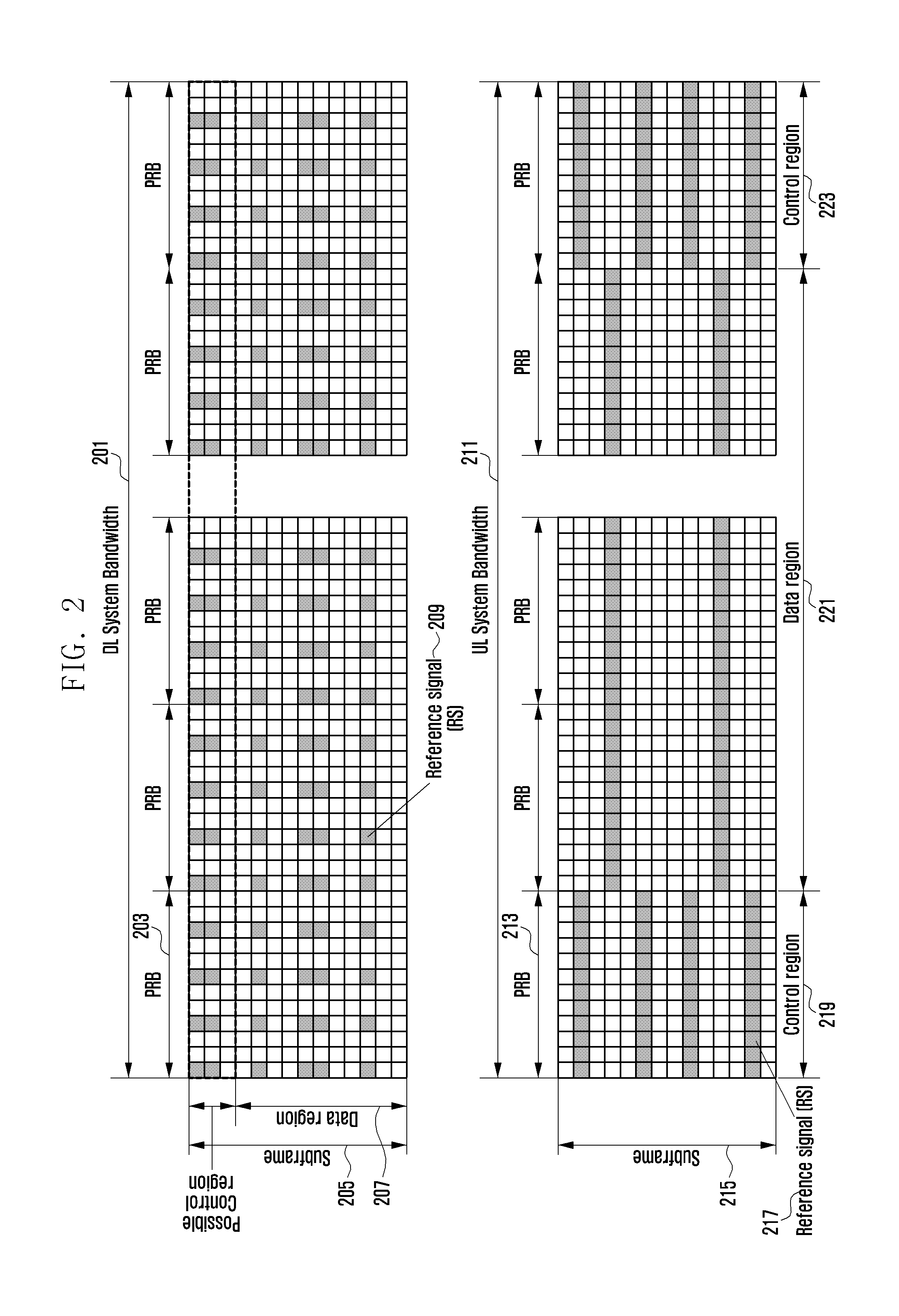Method and apparatus for resource allocation in multi-carrier wireless system
a wireless system and multi-carrier technology, applied in the field of wireless communication systems, can solve problems such as frequency efficiency degradation
- Summary
- Abstract
- Description
- Claims
- Application Information
AI Technical Summary
Benefits of technology
Problems solved by technology
Method used
Image
Examples
Embodiment Construction
[0027]Various embodiments of the present invention are described in detail with reference to the accompanying drawings. The same reference symbols are used throughout the drawings to refer to the same or like components. Detailed descriptions of well-known functions and structures are omitted to avoid obscuring the subject matter of the present invention. Specific terms are defined in the following description and the meaning of specific terms or words used is not intended to limit aspects of the present invention.
[0028]The following description focuses on Long Term Evolution (LTE) and LTE-Advanced systems. However, the present invention is also applicable to other wireless communication systems supporting base station scheduling.
[0029]FIG. 1 is a diagram illustrating a system, according to an embodiment of the present invention.
[0030]In FIG. 1, a UE (user equipment) 101 or 111 sends data to another UE. Voice data is a representative data exchanged between UEs. The UE 101 or 111 als...
PUM
 Login to View More
Login to View More Abstract
Description
Claims
Application Information
 Login to View More
Login to View More - R&D
- Intellectual Property
- Life Sciences
- Materials
- Tech Scout
- Unparalleled Data Quality
- Higher Quality Content
- 60% Fewer Hallucinations
Browse by: Latest US Patents, China's latest patents, Technical Efficacy Thesaurus, Application Domain, Technology Topic, Popular Technical Reports.
© 2025 PatSnap. All rights reserved.Legal|Privacy policy|Modern Slavery Act Transparency Statement|Sitemap|About US| Contact US: help@patsnap.com



